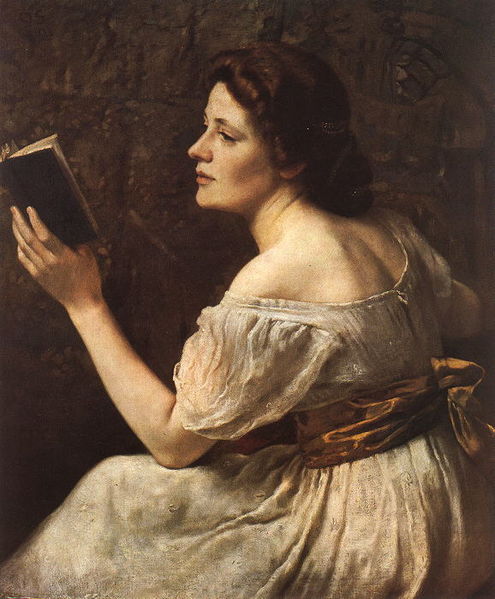Truth in Fiction Reconsidered
DOI:
https://doi.org/10.7146/rc.13104628Resumé
Possible and narrative worlds are traditionally the most influential tools for explaining our understanding of fiction. One obvious implication of this is considering fiction as a matter of pretence. The theory I offer claims that it is a mistake to take truth as a substantial notion. This view rejects possible worlds and pretence as decisive features in dealing with fiction. Minimalist theory of fiction offers a solution that gives a way to combine a philosophical theory of meaning and views of literary theory. Narrative worlds approach saves its usefulness since its focus is more in the psychological process of reading. Minimalist theory of fiction is based on the minimal theory of truth and the use theory of meaning. The idea of language games as a practice of constructing contextual meanings is also decisive. A sentence is not true because it corresponds to a fact but because it is used in a right way in certain circumstances. The rejection of the possible worlds approach is thus based on the idea that understanding fiction is essentially about recognizing the constant interplay between different texts and contexts. Better understanding makes different interpretations possible.
Referencer
Ayer, A. J. 1936. Language, Truth and Logic. London: Victor Gollancz. 1936. Published in Pelican Books.
Byrne, A. (1993. Australasian Journal of Philosophy 71 (1):24 – 35
Currie, G (1990). The Nature of Fiction. Cambridge: Cambridge University Press.
Evans, G. (1982). The Varieties of Reference. New York: Oxford University Press.
Frege, G. (1980) [1892]. “On Sense and Reference”. Reprinted in P. Geach and M. Black (eds.), Translations from the Philosophical Writings of Gottlob Frege. Oxford: Blackwell.
Dias, M. G., & Harris, P. (1988). The effect of make-believe play on deductive reasoning. British Journal of Developmental Psychology, 6, 207-221.
Dias, M. G., & Harris, P. (1990). The influence of the imagination on reasoning by young children. British Journal of Developmental Psychology, 8, 301-318.
Garvey, C. (1990). Play (2nd ed.). Cambridge, MA: Harvard University Press
Gerrig, 1993. Experiencing Narrative Worlds, On the Psychological Activities of Reading. New Haven, CT: Yale University Press, Boulder, CO: Westview Press
Harris, P. L. (2000). The work of the imagination. Malden, MA, US: Blackwell Publishers Inc.
Heath, M. (1999), "The Universality of Poetry in Aristotle’s Poetics", Classical Quarterly 41, 389-402
Horwich, P. (1998a). Truth. Second Edition. Oxford: Clarendon Press.
Horwich, P. (1998b). Meaning. Oxford: Clarendon Press.
Kristeva, J. (1980). Desire in Language: A Semiotic Approach to Literature and Art. New York: Columbia University Press.
Kroon, F. (1994). “Make-Believe and Fictional Reference”, The Journal of Aesthetics and Art Criticism, 42: 207–214.
Lewis, D. (1980). “Truth in Fiction”. American Philosophical Quarterly 15: 37–46.
Lillard, A. S. (1993). Pretend play skills and the child's theory of mind. Child Development, 64, 348-371
Nyberg, C. (2015). “Fiction in Drama Education Offers Learning Opportunities for All – Philosophical Perspectives in Drama Education”. The European Journal of Social and Behavioral Sciences 14(3): 1929-1937. DOI: 10. 15405/ejsbs.174
Nyberg, C. (2016). “Fiction, Truth and Reference. Minimalist Theory of Fiction”. Forthcoming in Peter Lang Series, Studies in Philosophy of Language and Linguistics.
Parsons, T. (1980). Non-Existent Objects. New Haven: Yale University Press.
Pavel, T. (1975). “Possible Worlds in Literary Semantics.” Journal of Aesthetics and Art Criticism 34, 165–76.
Pavel, T. (1986). Fictional Worlds. Cambridge: Harvard UP.
Proust. J. (2007). “Metacognition and metarepresentation”. Synthese 159: 271-295.
Quine, W. V. O. (1970). Philosophy of Logic. Englewood Cliffs, N. J.: Prentice-Hall.
Rakoczy, H. (2003). The development of performing and understanding pretend play: A cultural learning perspective. Doctoral thesis. Department of Psychology, University of Leipzig
Ramsey, F.P. 1931. On Facts and Propositions. In Blackburn, S & Simmons, K (eds.) 1999. Oxford: Oxford University Press.
Randell, A & Nielsen, M. (2007). Children's Communication of Pretend Acts Using Social Cues, In M. A. Vanchevsky (Ed), Frontiers in Cognitive Psychology, Nova Science Publishers
Ryan, Marie-Laure (1985). “The Modal Structure of Narrative Universes.” Poetics Today 6.4, 717–56.
Ryan, Marie-Laure (1991). Possible Worlds, Artificial Intelligence and Narrative Theory. Bloomington: U of Indiana P.
Ryan, M-L. (2013). Possible Worlds, the living handbook of narratology. http://www.lhn.uni-hamburg.de/article/possible-worlds
The Stanford Encyclopedia of Philosophy. (2016). http://plato.stanford.edu/entries/possible-worlds/ Referred 21.10.2016
Walton, K. (1990). Mimesis as Make-Believe. Cambridge, MA: Harvard University Press.
Wellman, H. M., Cross, D., & Watson, J. (2001). Meta-analysis of theory-of-mind development: The truth about false belief. Child Development, 72(3), 655-684.
Wittgenstein, L. (1999) [1963] Filosofisia tutkimuksia. Transl. By Heikki Nyman. Porvoo: WSOY. (originally Philosophische Untersuchungen 1953)
Zalta, E. (1983). Abstract Objects. An Introduction to Axiomatic Metaphysics. Dordrecht: Reidel.
Downloads
Publiceret
Citation/Eksport
Nummer
Sektion
Licens
Beskriv vilkårene her! Denne tekst dukker op under distribuering og licens

